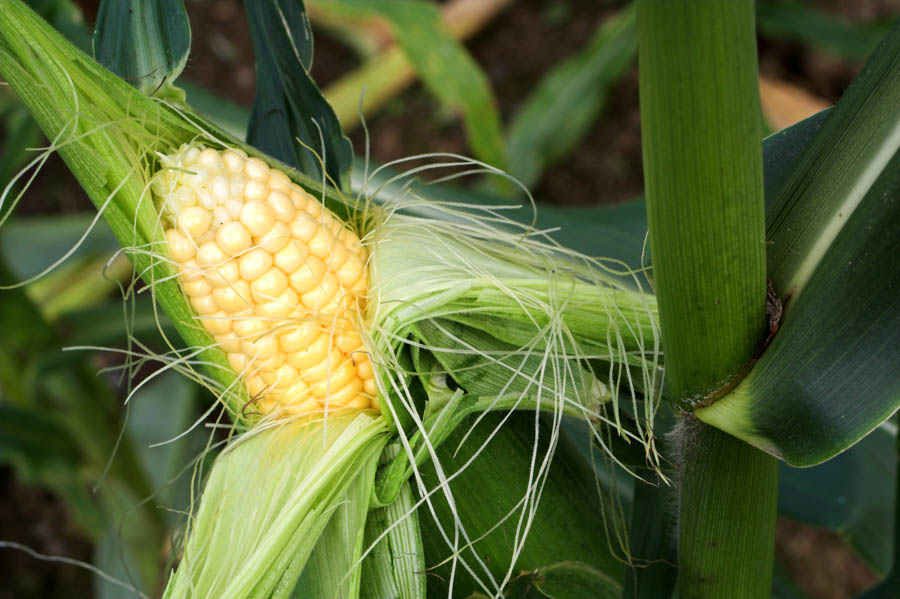Watering Corn in the Home Garden

Knowing exactly how much to water corn can be more difficult than with other vegetables; curling leaves are not necessarily signal a need for more water and some varieties should be dry on the stalk at harvest.

Corn requires consistent, sufficient moisture in well-drained soil, especially during seedling growth, during the critical pollination period after the emergence of the corn silks or tassels, and during development of kernels.
As corn seedlings leave the seedling stage and being to establish, water less frequently and more deeply, to the full estimated depth of roots. When young, corn roots tend to be shallow, but roots may grow to more than 3 feet deep in loose, fertile soils as plants mature. Root depth and water penetration in soil can be evaluated by pressing a long screwdriver or thin metal probe into soil and noticing when soil resistance changes as dry soil is reached. This method is preferred with corn to using a shovel, which may sever root sections. A shovel can also be pressed carefully into the soil outside of a garden bed of, beyond the root systems of any established corn plants.
Corn leaves often curl to reduce transpiration on hot days. This is not necessarily a sign of drought stress. If plant leaves remain curled during the night or when temperatures are cool, increase the frequency or depth of your irrigation.
Popcorn and ornamental corn types should be dry on the stalk at harvest; reduce watering to these varieties as ears mature to allowing drying.
GardenZeus has customized information for growing corn based on zip code. To get started, enter your zip code.
GardenZeus Secrets of Success for Growing Corn in the California Home Garden
GardenZeus Soil and Fertilization Tips for Growing Corn in California
The GardenZeus Quick and Easy Guide to the Main Types of Garden and Agricultural Corn